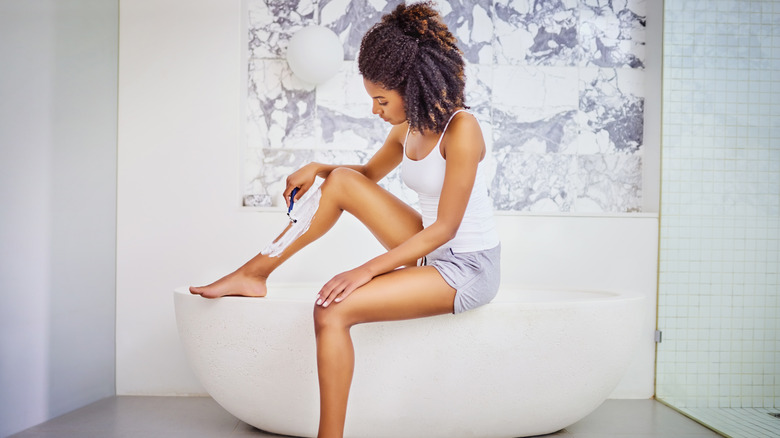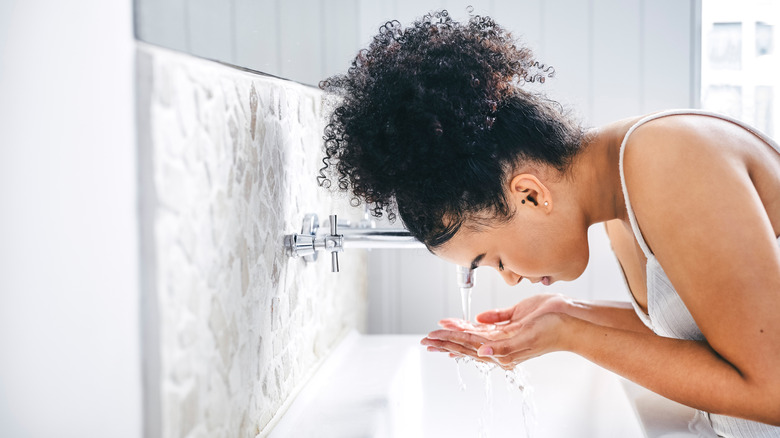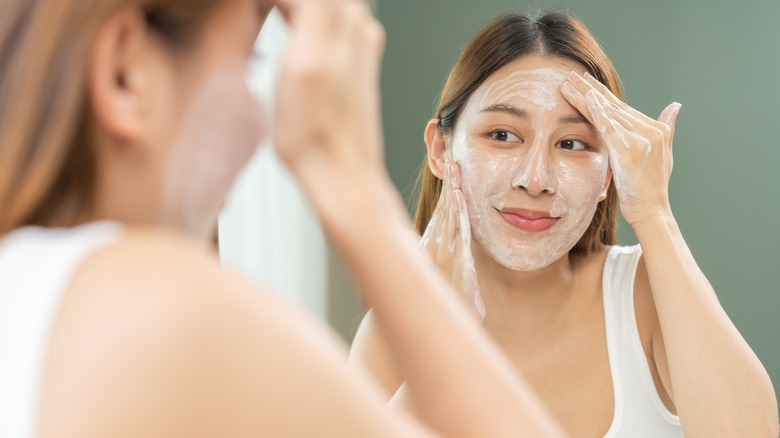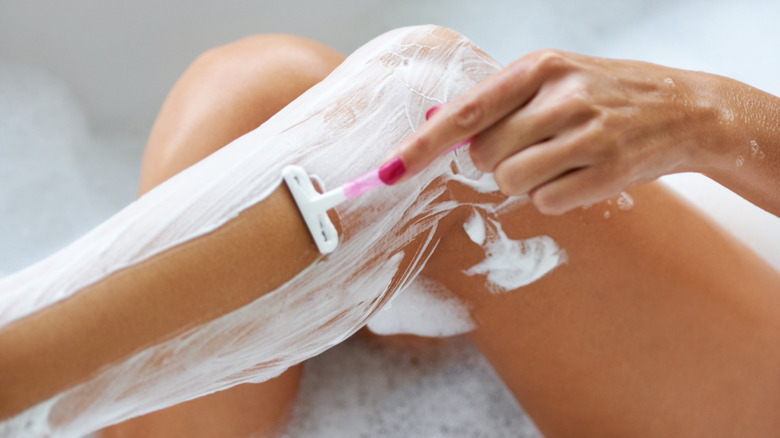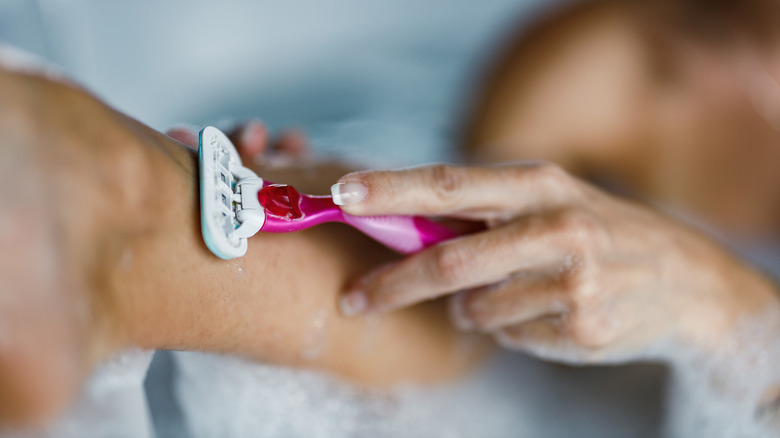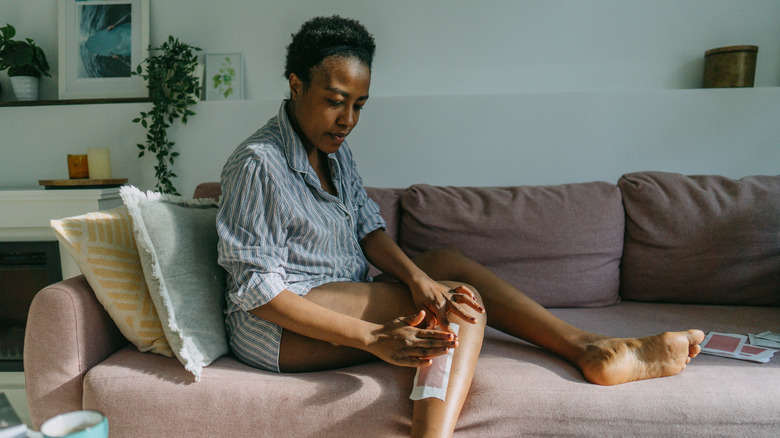Our Best Tips For Preventing Annoying (& Painful) Ingrown Hairs
As much as we all love smooth skin, the unfortunate reality of hair removal is the risk of dreaded ingrown hairs. In fact, Jigyasu Karunesh, international brand manager at Flamingo, told Elle UK that as many as 62% of people will develop an ingrown hair at some point in their lives. Known in the medical world as pseudofolliculitis barbae, this pesky irritation usually happens after waxing or shaving. When the hair starts to grow back, instead of growing outwards in a straight line, it curves back on itself and grows underneath the skin.
There are a few ways you'll know you've got an ingrown hair. As well as literally being able to see it under the skin, it can cause small bumps, become sore, or feel itchy. If you regularly have multiple or very painful ingrown hairs, always see a doctor in case they've become infected or have a medical condition. If you just have the odd one though and they don't tend to be too painful, they can be more of an annoyance than a cause for serious concern.
But you don't have to be resigned to ingrown hairs every time you have a hair removal session. There are a number of ways to make your hair removal routine a little smoother (pun intended), banishing those annoying ingrowns for good.
Wash the skin before and after shaving
Before grabbing your razor, it's recommended you wash the area you plan to shave with warm water. This will soften the hairs and make them easier to remove, while also clearing any dirt from the area. You don't want your razor to pick that up, after all. Although it may not be totally necessary, if you suffer from frequent ingrown hairs, a product like a pre-shave oil could help prep your skin for the hair removal process.
Once you've finished shaving, it's a good idea to wash the area again to clear away any stray hairs and potential bacteria that may have been transferred to your skin. After rinsing the area, apply a cool wet cloth to the area and leave it there for around five minutes. This will help reduce any irritation, especially if you have sensitive skin. After that, apply a post-shave product like a balm or lotion (a moisturizer is always a great idea after shaving too), while glycolic acid can also be applied to the shaved area in order to remove any dead skin cells that may encourage ingrown hairs.
But it's not only the skin you should keep clean. It's also important to rinse your razor with water after each stroke. This will help remove any hairs stuck in the blades (so you don't have to keep shaving over the same area), as well as adding a little extra lubrication.
Keep the skin hydrated and exfoliated
We all know skincare is important, but it's essential for body parts with hair you plan to remove. Keep your skin cleansed, exfoliated, and moisturized helps body hair to grow in a more healthy way, while ensuring the skin stays hydrated.
Regular exfoliation can also keep the skin healthy and ready for shaving. "Dead skin cells can contribute to the growth of ingrown hairs," head of product development at Estrid, Charlotte Terling, told Elle UK. "[Exfoliating] will remove any dead skin cells and keep ingrown hairs at bay." This is where the glycolic acid we already told you about comes back in. Sugar scrubs can also be a Godsend for the body to remove dry skin, while there are also plenty of exfoliants for specific areas. If you're trying to prevent ingrown hairs on the face, always opt for a specific face exfoliant. If you find them more around the bikini area, opt for a softer, lighter exfoliator designed for use in more intimate areas. Another beauty treatment you may want to invest in to prevent ingrowns? Microdermabrasion. This will also exfoliate the skin, clearing away any dead cells.
Make sure you're not just using water
Though all too many of us skip this step when we're in a rush (consider us guilty), a shaving cream or gel really can make all the difference when preventing ingrown hairs. It allows you to get a much closer shave because it helps the blade glide easily across the skin, thus minimizing friction. This makes it less likely for hair to grown inward and for painful razor burns and bumps to form. Of course, if you don't have any shaving cream, using just warm water is fine — just make sure you keep the skin moistened the entire time.
While we're on the subject, your technique matters, too. Firstly, always shave in the direction the hair is growing so there's not too much resistance. You might think this doesn't make sense as going upwards gives you a closer shave, but if you want to avoid bumps, it's necessary to minimize irritation . Next, don't pull the skin too much and don't press too hard. "Try not to add too much pressure when shaving. Leaving a little bit of stubble can actually help prevent ingrown hairs growing in the wrong direction," Charlotte Terling told Elle UK.
Shaving powders can be a great choice for those looking to prevent ingrown hairs. "These powders act as a chemical depilatory to help minimize the chance of ingrown hairs and razor burn," Dr. Marisa Garshick, a board-certified dermatologist, told NBC Select. These products, which go onto the skin like a paste, actually remove the hair without the need for a razor.
Replace your razorblades regularly
Dull blades are not only responsible for ingrowns, but they can also cause the likes of razor burn and other skin irritations. Not to mention, an old razor is also more likely to create an infection due to the potential for a build up of bacteria.
To avoid this, keep your razorblades sharp so they can remove hair without meeting much resistance. "Your razor should glide like butter over your skin, and if it doesn't, it's a sign that it's time to switch blades," Charlotte Terling explained to Elle UK. If you're still having trouble deciding when that is, a good rule of thumb to follow is to replace the blade every five to seven shaves.
When it comes to picking the perfect razor blades, there's an art to that, too. "Use a sharp razor with a single or double blade because they won't cut the hairs as short," board-certified dermatologist Dr. Shilesh Iyer recommended to Healthline.
Consider alternatives to shaving
Sometimes, even with all the right steps, shaving still causes annoying ingrown hairs. In that case, it may be time to consider other hair removal methods. Waxing is a popular alternative that is known to cause less ingrowns than shaving as it removes the hair from the root, rather than just cutting it down.
Laser hair removal is also a go-to for many people who want to be hairless without the hassle of ingrown hairs. Plus, with results lasting for several months and years, it's hard to beat the convenience
